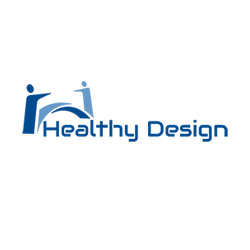Patients who are in intensive care units (ICU) or require critical care are often sedated and restrained to prevent them from removing vital support lines or harming themselves. But sedating and restraining patients can also lead to complications during their stays and after they return home, such as muscle weakness, balance problems, cardiopulmonary issues, cognitive decline, delirium, anxiety, depression, and nightmares. Dr. Marie Pavini, an ICU physician with more than 20 years of experience, was committed to developing an alternative arm restraint system to address these challenges. “There are 27,000 adults in the ICU every day that are restrained,” said Pavini, “There definitely is another way, we just needed another tool.”
In 2016, Pavini founded Healthy Design, a Vermont-based company, and manufactured the first prototype of the Exersides Refraint System. Instead of restraining patients by tying them to bed, the Exersides Refraint System uses auto-adjusting wrist straps and a loosely applied strap to allow patients to maintain arm movement. The 3.5-pound system also contains and deflects vital tubes and lines, preventing patients from getting entangled in or removing them.
According to a pilot study conducted in 2017, patients using the Exersides Refraint System had more in-bed movement, less sedation, and less agitation compared to patients using traditional arm restraint systems. In addition, patients, families, and nurses involved in the pilot study preferred this system. Along with these benefits, the system is latex-free, MRI-compatible, and easily adjustable so health care providers can adjust the range of motion to best fit the patient’s predicted range of safe arm movement.
Healthy Design received funding through the NIH Small Business Technology Transfer (STTR) and Small Business Innovation Research (SBIR) programs to assist with the development, testing, and commercialization of the Exersides Refraint System. Specifically, the company received a STTR grant in 2018 to optimize and test the system in older, critically ill, mechanically ventilated patients. The aim of the project was to reduce immobility, sedation, agitation, and cognitive impairment. “Each NIH grant allows you to add more features and refine the system to the perfect version that it is now,” said Pavini.
Healthy Design received funding through the NIH SBIR and STTR programs to assist with the development, testing, and commercialization of the Exersides Refraint System.
After successful Phase I and Phase II tests, Healthy Design received additional SBIR funding in 2021 to commercialize, manufacture, and market the Exersides Refraint System. Now the system is available for patients both nationally and internationally.
“I’ve been accepted into their commercialization accelerator program, which I completed recently. I was also asked to present at two different investor partner conferences that led to other awards and other invitations,” said Pavini. “It’s just incredible that the NIH has been there to help me. None of this would have happened without that.”







